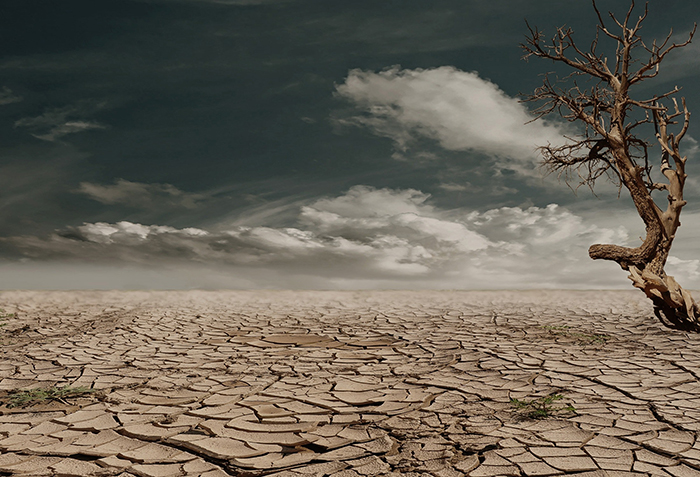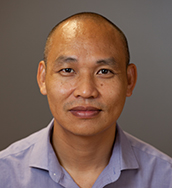Study analyzes how fact-checkers from four different countries assess climate change claims
LAWRENCE — In this era of rampant misinformation, the role of fact-checkers is becoming increasingly important. Yet, the practice is relatively understudied. Research from the University of Kansas has analyzed how fact-checkers in four countries practice the craft in relation to the contentious issue of climate change. In addition to finding that fact-checkers across the world have different approaches, the researchers suggest the most effective ways to approach the practice to provide accurate, reliable and easy to understand information to the public.
 The KU research team analyzed nearly 500 examples of fact-checking on climate change information from the United States, United Kingdom, Germany and Australia conducted between 2015 and 2019. They found the fact-checks mostly focused on four aspects of climate change: existence, causes, impacts and solutions. The most effective examples provided visual information, cited sources and provided concise information for the public, researchers found.
The KU research team analyzed nearly 500 examples of fact-checking on climate change information from the United States, United Kingdom, Germany and Australia conducted between 2015 and 2019. They found the fact-checks mostly focused on four aspects of climate change: existence, causes, impacts and solutions. The most effective examples provided visual information, cited sources and provided concise information for the public, researchers found.
 “Fact-checking is seen as a way to clear up any doubt on climate change information. Since about 2016, it has taken root in many countries as we have seen rampant misinformation on the topic,” said Hong Tien Vu, associate professor of journalism & mass communications at KU, the study’s lead author. “People largely associate fact-checking with the news media. Because we don’t often have good guidelines about how to practice the profession, looking at how it’s practiced in different countries is important.”
“Fact-checking is seen as a way to clear up any doubt on climate change information. Since about 2016, it has taken root in many countries as we have seen rampant misinformation on the topic,” said Hong Tien Vu, associate professor of journalism & mass communications at KU, the study’s lead author. “People largely associate fact-checking with the news media. Because we don’t often have good guidelines about how to practice the profession, looking at how it’s practiced in different countries is important.”
The study, co-written with Annalise Baines and Nhung Nguyen, doctoral candidates in journalism & mass communications at KU, was published in the journal Journalism & Mass Communication Quarterly.
The analysis showed that among the four aspects of climate change fact-checking, in the United States, most instances assessed claims about whether climate change really existed. Australian instances most often were fact-checking claims about solutions, In the United Kingdom, most instances regarded impact. Overall, about one-fourth of claims fact-checked were about its existence, again with most of those coming from the United States, and about 22% were regarding climate change effects.
“That pretty well reflects what we see in the public discussion here, division about whether climate change even exists,” Vu said. “I’d say that tells us, in the U.S., the issue is more contested — it is very contentious. It shows we’re still in the early stages of finding an agreement, there is still a lot of denial, meaning it will take longer to adapt and develop a plan to mitigate climate change.”
In addition to types of claims checked, the study analyzed who was making the claim. Individuals, mainly politicians, followed by businesses/corporations and posts on social media, were the most common sources of information to be checked. Apart from Germany, where most checks were conducted to verify information from social media, the vast majority of claims were made by politicians.
“We found most of the claims being fact-checked were made by politicians, about 81%. That suggests fact-checking services tend to spend most of their time in a watchdog role, checking claims politicians made,” Vu said.
The majority of claims that were fact-checked originated from the United States, as more than 300 of the nearly 500 fact-checking instances took place here.
In addition to analyzing what types of claims were fact-checked and where, the researchers examined how the fact-checkers presented their information. They argue the most effective presentations included visual information, concise summations of their responses, documentation of their sources and a clear verdict as to whether a claim was true, false or misleading. Accessibility is key, as people often don’t have time to read additional, lengthy documents when they come across information they may doubt, Vu said. And if they do, it needs to be information that people can understand and transparently share its source. Most fact-checking instances did provide their sources, including links to further information.
“We found that more than half of the items included a visually accessible verdict, which is more than I thought it would be, but that also means that we found 37% did not have visual content,” Vu said. “We would hope fact-checking content always includes visual context and clear verdicts to help people understand.”
The researchers hope to build on the research by conducting a big-data analysis on the role of fact-checking in relation to the COVID-19 pandemic. As the role of fact-checking is becoming more important, they hope to expand their research to cover how fact-checkers from different parts of the world do their jobs.
Further understanding how fact checking approaches important topics such as the pandemic and climate change in different locations around the world can help work toward consensus on action and help improve the practice itself.
“We need to think about how we can get accurate information to the public,” Vu said. “If fact-checking is part of that, it needs to reach audiences in a better way. The practical purpose here is to help fact-checkers understand the best way to conduct their services and debunk falsehoods and misinformation by providing clear, accurate information.”
Image credit: Pexels.com